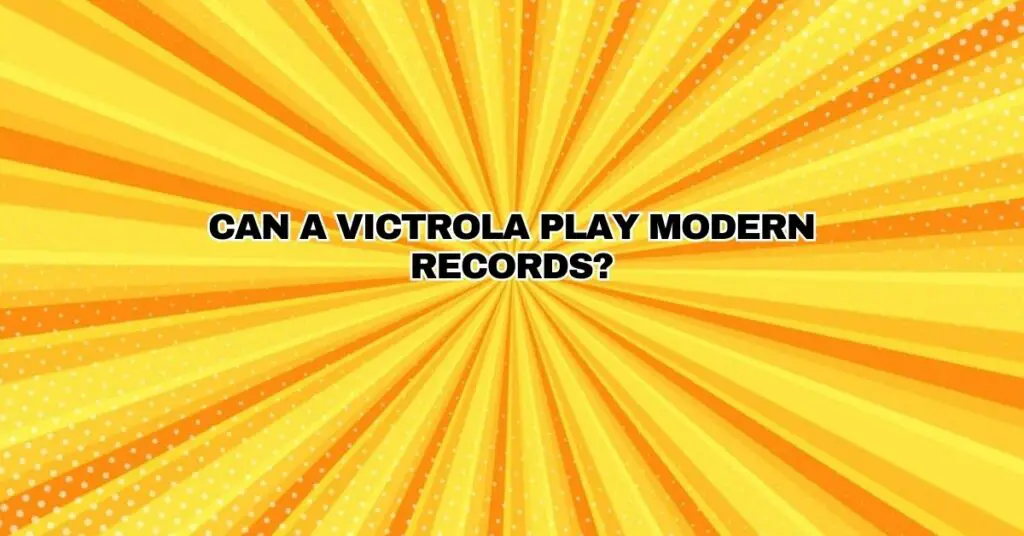Vinyl records have experienced a remarkable resurgence in popularity in recent years, with enthusiasts and audiophiles alike seeking to experience the warm and authentic sound that analog music provides. While vintage record players like the Victrola are cherished for their nostalgia and classic appeal, a common question arises: can a Victrola play modern records? In this article, we’ll explore the compatibility between Victrola record players and modern vinyl records and discuss the factors that influence whether your vintage turntable can handle contemporary releases.
Understanding the Victrola Record Player
Before delving into the compatibility of Victrola record players with modern vinyl records, it’s essential to understand what a Victrola is and how it operates. Victrola originally referred to a line of products by the Victor Talking Machine Company (later known as RCA Victor). Victrola was a brand synonymous with high-quality phonographs and the records designed for them.
However, when most people refer to a “Victrola” today, they are often talking about vintage-style record players, many of which are not true Victrola-branded devices but rather contemporary turntables designed to mimic the aesthetics of classic phonographs. These modern variants typically come with built-in speakers, multiple playback speeds, and various features for convenience and a vintage appearance.
Compatibility with Modern Records
The compatibility of a Victrola record player with modern vinyl records primarily depends on two crucial factors:
- Playback Speeds: The standard playback speeds for vinyl records are 33 1/3 RPM (Revolutions Per Minute), 45 RPM, and 78 RPM. Most modern vinyl records are designed to be played at either 33 1/3 RPM or 45 RPM. Some specialty records, like those featuring spoken word or older classical music, may require 78 RPM.
Vintage Victrola players, particularly those manufactured in the early 20th century, were primarily designed for playing 78 RPM records. This means that, without the appropriate modifications or adaptations, they may not be suitable for playing modern records that typically require 33 1/3 RPM or 45 RPM.
- Cartridge and Stylus: The cartridge and stylus (also known as the needle) on a turntable are critical components for playing records. The type of cartridge and stylus on your Victrola player may not be compatible with modern records.
Most modern records are designed to be played with a magnetic cartridge and a diamond or elliptical stylus, which can trace the finer grooves and provide better sound quality. Vintage record players, including Victrolas, often use ceramic cartridges and styluses, which are better suited for playing the wider grooves of older 78 RPM records.
Making Victrolas Compatible with Modern Records
If you have a vintage-style Victrola record player and wish to play modern records, several steps can be taken to make it compatible:
- Adjust Playback Speed: Some modern turntables, including vintage-style Victrola players, have adjustable playback speeds. Make sure to set the player to the correct speed for the record you’re playing (33 1/3 RPM or 45 RPM).
- Upgrade the Cartridge and Stylus: Consider replacing the ceramic cartridge and stylus with a modern magnetic cartridge and diamond stylus. This upgrade can improve the sound quality and compatibility with modern records.
- Consider External Speakers: While many Victrola-style players come with built-in speakers, connecting an external set of speakers can enhance the sound quality, making your player better suited for modern records.
- Take Precautions: Be cautious when playing valuable or rare records on a vintage-style turntable, as older styluses and cartridges can potentially damage them. Consider reserving your Victrola for playing more common records.
Conclusion
In conclusion, a vintage-style Victrola record player can potentially play modern records with some modifications and adjustments. It’s essential to consider the playback speeds, the type of cartridge and stylus, and the overall condition of your turntable when attempting to play modern vinyl releases. While these vintage-inspired turntables offer the charm of yesteryear, they may require upgrades to meet the specific requirements of contemporary records, ultimately allowing you to enjoy the timeless experience of analog music in a modern world.


